
Death at the Opera is a 1934 mystery detective novel by the British writer Gladys Mitchell. It was the fifth novel in her series featuring the psychoanalyst and amateur detective Mrs Bradley. It was published in the United States under the alternative title of Death in the Wet.
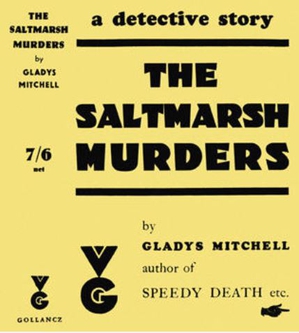
The Saltmarsh Murders is a 1932 mystery detective novel by the British writer Gladys Mitchell. It is the fourth in her long-running series featuring the psychoanalyst and amateur detective Mrs Bradley. It has been highly acclaimed as a part of the Golden Age of Detective Fiction.

Too Soon to Die is a 1953 mystery detective novel by the British writer Henry Wade. It was the sixth in a series of seven novels featuring the character of Inspector Poole, published during the Golden Age of Detective Fiction. It followed a thirteen year gap since the publication of the previous novel Lonely Magdalen.
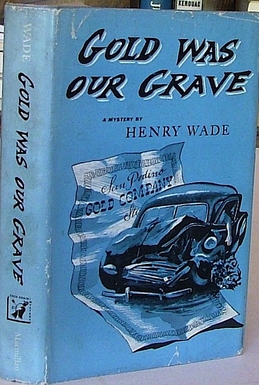
Gold Was Our Grave is a 1954 mystery detective novel by the British writer Henry Wade. It was the seventh and last in a series of novels featuring the character of Inspector Poole, published during the Golden Age of Detective Fiction.

The Bravo of London is a 1934 mystery thriller novel by the British writer Ernest Bramah. It featured his most celebrated character the blind detective Max Carrados who had first appeared in 1914. It was the first and only full-length novel to feature Carrados, who usually appeared in short stories.
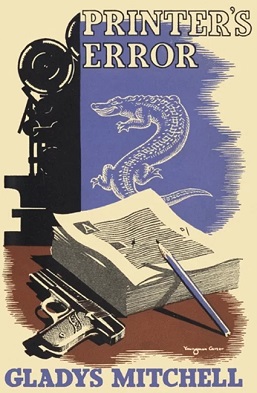
Printer's Error is a 1939 mystery detective novel by the British writer Gladys Mitchell. It is the tenth in her long-running series featuring the psychoanalyst and amateur detective Mrs Bradley.

The Mystery of a Butcher's Shop is a 1929 mystery detective novel by the British writer Gladys Mitchell. It is the second in her long-running series featuring the psychoanalyst and amateur detective Mrs Bradley. It further established the reputation of the quick-witted Bradley who is some way ahead of the investigating police officers. Mitchell also employed a number of original touches that would continue during the series.

Dead Men's Morris is a 1936 mystery detective novel by the British writer Gladys Mitchell. It is the seventh in her long-running series featuring the psychoanalyst and amateur detective Mrs Bradley. It was the first to be published by Michael Joseph who released all the subsequent fifty nine novels in the series. It was later republished with the alternative title Death Comes at Christmas.

Laurels are Poison is a 1942 mystery detective novel by the British writer Gladys Mitchell. It is the fourteenth in her long-running series featuring the psychoanalyst and amateur detective Mrs Bradley. It was Mitchell's own favourite among her novels and has been considered her best by other critics. It introduced the character of Laura Menzies who became recurring assistant of Mrs Bradley in subsequent novels.

Hangman's Curfew is a 1941 mystery detective novel by the British writer Gladys Mitchell. It is the twelfth in her long-running series featuring the psychoanalyst and amateur detective Mrs Bradley.
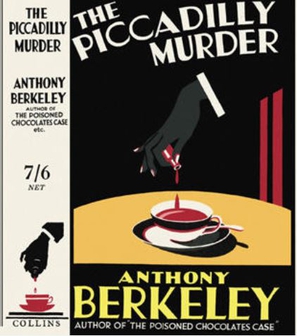
The Piccadilly Murder is a 1929 mystery detective novel by the British writer Anthony Berkeley. Berkley was a prominent writer during the Golden Age of Detective Fiction, known for his private detective Roger Sheringham series and his development of the inverted detective story. Although not part of the Sheringham series it featured the character of Chief Inspector Moresby of Scotland Yard who also appeared several times with Sheringham. Moresby reappeared with the chief protagonist Chitterwick in a sequel Trial and Error in 1937.

Trial and Error is a 1937 mystery detective novel by the British writer Anthony Berkeley. It was a loose sequel to the 1929 novel The Piccadilly Murder, featuring two of the characters from the earlier work the unprepossessing but shrewd Ambrose Chitterwick and Chief Inspector Moresby of Scotland Yard. Berkeley was a prominent author of the Golden Age of Detective Fiction, known for his inverted detective stories.
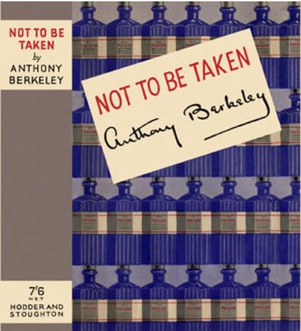
Not to Be Taken is a 1938 mystery detective novel by the British writer Anthony Berkeley. It was one of several stand-alone novels he wrote alongside his series featuring the private detective Roger Sheringham. It was written when the Golden Age of Detective Fiction was at its height. It was published in the United States with the alternative title A Puzzle in Poison.

Death in the House is a 1939 detective novel by the British writer Anthony Berkeley. It was one of a number of stand-alone novels he wrote alongside his series featuring the private detective Roger Sheringham. It was his penultimate novel, and his final whodunnit. In later years he continued writing reviews of other crime novels, but no longer wrote his own.

Sunset Over Soho is a 1943 detective novel by the British writer Gladys Mitchell. It is the sixteenth in her long-running series featuring the psychoanalyst and amateur detective Mrs Bradley. Bradley was one of a number of investigators active during the Golden Age of Detective Fiction.
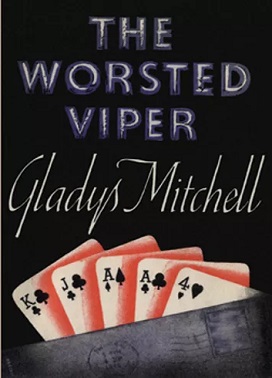
The Worsted Viper is a 1943 detective novel by the British writer Gladys Mitchell. It is the fifteenth in her long-running series featuring the psychoanalyst and amateur detective Mrs Bradley. Bradley was one of a number of investigators active during the Golden Age of Detective Fiction. Much of the novel takes place on the Norfolk Broads.
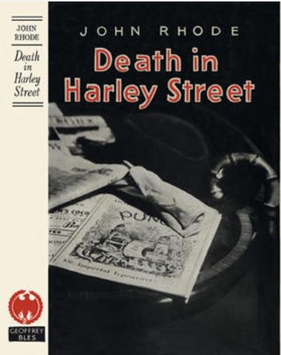
Death in Harley Street is a 1946 detective novel by John Rhode, the pen name of the British writer Cecil Street. It is the forty third in his long-running series of novels featuring Lancelot Priestley, a Golden Age armchair detective. Several sources consider it to be the author's masterpiece.
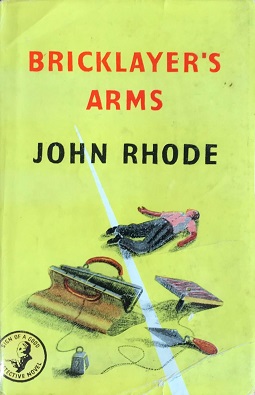
Bricklayer's Arms is a 1945 detective novel by John Rhode, the pen name of the British writer Cecil Street. It is the forty first in his long-running series of novels featuring Lancelot Priestley, a Golden Age armchair detective. It was published in America by Dodd Mead under the alternative title Shadow of a Crime. It was particularly notable for the lesser role played by Priestley, with the case being solved largely by Inspector Waghorn of Scotland Yard alone.

Death in the Quarry is a 1934 detective novel by the British authors G. D. H. Cole and Margaret Cole. It was the twelfth in their series of novels featuring Superintendent Wilson, one of the many investigators of the Golden Age of Detective Fiction. It was published by the Collins Crime Club.

As a Thief in the Night is a 1928 detective novel by the British author R. Austin Freeman. Part of his long-running series of novels featuring the forensic investigator Doctor Thorndyke, it was published in London by Hodder and Stoughton and in New York City by Dodd, Mead.




















